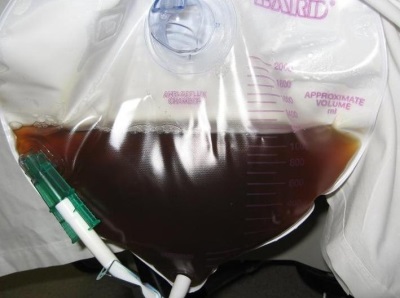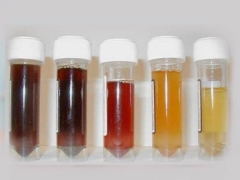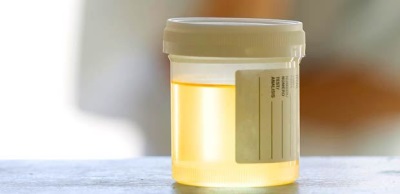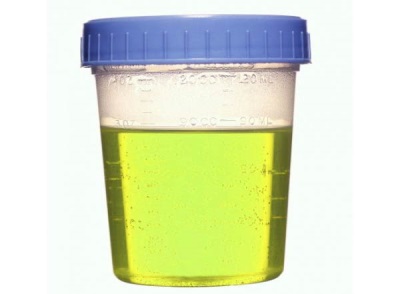Dark urine in a child
Attentive parents always notice changes in the condition of the baby, so the unusual color of urine can disturb and frighten them. Is dark urine a symptom of the disease, why can it change its color and what should be done if it suddenly becomes darker than usual?
What color should be normal?
The normal color for the urine of a child is yellow in a different shade. It may be a light yellow shade, and darker - it all depends on the concentration of substances dissolved in it (in particular, salts and pigments). In infants who receive only breast milk or a mixture, the urine is often very light. In an older child, it acquires a more intense yellow color. In addition, in the morning after sleep it is darker, as it is more concentrated.
Possible reasons
Among non-hazardous factors affecting the color of urine, emit food, water regime and medication. However, the darkening of this biological fluid can be observed in case of serious diseases.
Yellow orange
Most often, the appearance of such a color of urine leads to:
- Eating plenty of carrots and other foods that have orange and yellow pigments.
- Acceptance of multivitamin preparations.
- Taking medications of the phenothiazine group, as well as rifampicin.
- Dehydration.
Dark brown
Acquisition of urine brown color is possible with:
- Dehydration. It can be both in case of insufficient drinking and in dangerous conditions, such as high temperature, vomiting, heart disease and other pathologies.
- Eating dishes from legumes, aloe, and rhubarb.
- Reception laxatives and anti-malarial drugs, as well as some other medications.
- Diseases of the gallbladder and liver.
- Glomerulonephritis.
- Chemical poisoning.
Read more in the article about brown urine in children.

Red
Such coloring may appear as a result:
- Eating food with red pigments, such as beets, rhubarb dishes and red berries. At the same time, the transparency of the urine will remain, the child will not have any more alarming symptoms, and within a day after the cessation of the use of such food the color is normalized.
- Taking metronidazole, ibuprofen, rifampicin, laxatives and some other drugs.
- Blood spills This shade becomes dirty red, and turbidity appears in the urine (blood clots can also be detected). In addition, the child often complains of pain and other symptoms.
- Destruction of red blood cells. With this pathology gets a large amount of hemoglobin.
- Muscle destruction It leads to the fact that urine is excreted with a large amount of myoglobin.
- Piello or glomerulonephritis. In this case, there are additional symptoms of inflammation of the kidneys and urine turbidity.
What to do in case red urine in a childread in another article.
Greenish / Blue Tint
Urine can get such a shade after eating asparagus dishes, as well as taking indomethacin, vitamin B complex complexes, methylene blue and some other drugs.Also, such a color can suggest that the child is poorly digested tryptophan or there is a hereditary disease in which the blood level of calcium increases.
Additional warning symptoms
Parents should be alerted by the following signs of disruption to the health of the child:
- Pain in the back, abdomen, muscles, and also when urinating.
- Fever, lethargy, refusal to eat, weakness.
- Very turbid urine, as well as the appearance of a strong odor.
- Very frequent or too rare urination.
- Yellowness of the skin and sclera, as well as itching of the skin and discoloration of feces.
If a child has such symptoms, it should be shown to a specialist without delay.
What to do?
Ignoring the fact of darkening of children's urine should not be, because it can be a sign of both innocuous conditions and rather dangerous pathologies. To identify the cause of the dark color will help the doctor, who will send the crumbs for additional research. Among them will be biochemical blood examination, Ultrasound study, hepatitis serological antibody test and other appointments.
Treatment
After determining the cause of the darkening of the urine, the doctor will recommend treatment depending on the identified health problems. If it becomes darker due to dehydration, efforts should be made to normalize the water balance in the body.
When hepatitis C is detected, a special diet, enzymes, hepatoprotectors and other medications are prescribed. If the reason for the dark color is kidney disease, antibiotics, diuretics and other medicines are prescribed depending on the disease.











